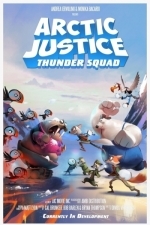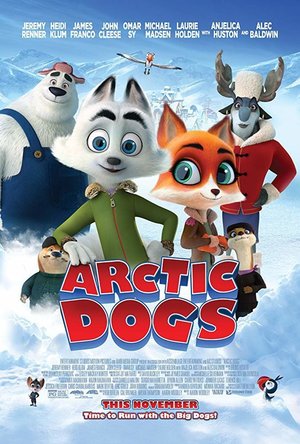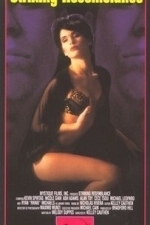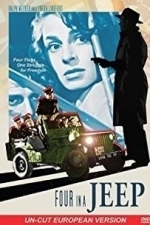Search

Remote Control for VU+ (iPad Edition)
Utilities and Productivity
App
Remote Control for VU+ Control your VU+ with the genuine looking App! ------ ►►► The #1 VU+...

Arctic Justice: Thunder Squad (2018)
Movie
Swifty the Arctic fox works in the mail room of the Arctic Blast Delivery Service but dreams of one...
animation

Arctic Dogs (2019)
Movie Watch
Swifty the Arctic fox works in the mail room of the Arctic Blast Delivery Service but dreams of one...
BankofMarquis (1832 KP) rated Back to the Future (1985) in Movies
Mar 30, 2018
Almost a perfect film
I was flipping channels the other day and ran across BACK TO THE FUTURE, it was just about to start and since I hadn't seen it in quite awhile, I figured I'd catch the first part of it before venturing off to other surfing opportunities. As often happens in this sort of situation, I ended up transfixed by this film and watched the whole thing. After it was over, I asked myself why did I enjoy this film so much and my answer was fascinating (at least to me) -
BACK TO THE FUTURE is about as perfect of a film as there is.
Why? Let's start with the structure of this film. It follows the classic 3 Act structure. ACT 1: set up the premise, the gimmick (if any) and the stakes. ACT 2: escalate the stakes and throw in complications and obstacles. ACT 3: Resolve everything.
Seems like a pretty simple formula, right? So why do so many get it wrong? Quite simply, they don't keep it simple and then execute (almost to perfection) the simplicity of the structure. Let's break down the 3 Acts of BACK TO THE FUTURE.
ACT 1 - set up the premise, the gimmick and the stakes. The premise & gimmick is simple, time travel is possible and our hero travels back in time and is stranded there. The stakes are even simpler - our hero must find a way to get Back to the Future.
ACT 2 - escalate the stakes and throw in complicaitons and obstacles. The stakes are escalated by the fact that our hero interrupts the timeline of when his mother met his father, thus there is the very real possibility that he will cease to exist for his parents never met. Our hero must find a way to bring his mother and father together. The complications are that his parents are not the boring old fuddy-duddy's that our hero thought they were, his father is a peeping-Tom nerd and his mother is a randy high-schooler who falls in love (lust?) with our hero, her son. Further complicating things is that the time machine must find enough power to make the time travel device (the flux-capacitor!) work, power that is not readily available in this timeline. Adding one more complication to the mix is the school bully who is constantly after our hero.
ACT 3 - resolve everything. This is where this film excels. EVERY loose end is tied up. Our hero find a way to reunite his mother and father, the bully is put in his place, a source of energy is found and our hero's journey comes to a succesful conclusion.
There is much, much more to this film than those plot points, but I just wanted to show how deceptively simple and efficient this plot is. Kudo's must go out to screenwriter's Robert Zemeckis (more on him later) and Bob Gale for coming up with this idea and executing it so well. Gale (1941, KOLCHAK: THE NIGHT STALKER) said he came up with this idea when he saw his father's high school yearbook and dreamed about going back to meet him. He stated that he doubted that he and his father would have been friends.
An interesting side fact: The University of Southern California Film school's writing classes use the screenplay for Back to the Future as the model of "The Perfect Screenplay". So, I rest my case.
But a "perfect" screenplay would be worthless without near perfect execution of putting the words and actions up on the screen - and this film achieves that as well. Director (and co-screenwriter) Robert Zemeckis (WHO FRAMED ROGER RABBIT, FORREST GUMP) cleary had a vision of how to make this film and did not waiver from it. The action is strong, the fluidness of the film is solid and the performances are all top-notch. The only thing that might knock this film down a peg or two is some of the 32 "special effects" shots that - to look at it these days - seem somewhat archaic (see the flames between Doc Brown's and Marty's feet when the DeLorean first goes forward in time). But for the time, these special effects are state-of-the-art.
Speaking of performances, Michael J. Fox became a movie star with this film, and rightfully so. His Marty McFly is charming, quirky, intelligent, dorky - all at the same time. His uncomfortableness with his teen age mother is palatable. Credit must go with Director Zemeckis, who - after he couldn't get Fox released from his contract on the TV show FAMILY TIES - went (famously) with his 2nd choice, Eric Stoltz. When Stolt's seriousness and "method" acting was not meshing with the type of film he wanted to make, Zemeckis made the bold decision to fire Stoltz and worked out a deal where he can use Fox at night while Fox shot Family ties during the day.
Playing against Fox, brilliantly, is Christopher Lloyd as "Doc" Emmit Brown. A two-time Emmy winner (at the time) for playing crazy Jim Ignatowski on the TV show TAXI, Lloyd played Doc Brown as "part Einstein, part composer Leopold Stokowski", creating what would be the benchmark for "brilliant, scatter-brained scientist". Leah Thompson does the finest performance of her career as Marty's mother and Crispin Glover was beyond quirky as Marty's nerd/loser Dad. Finally Thomas F. Wilson is the embodiment of bully as "Biff" Tannen.
After the success of this film, two other BACK TO THE FUTURE films were made - films that I feel were good, but somewhat diluted the perfection of this film. No matter. Sit down, relax and enjoy one of the most "perfect" films ever made.
Letter Grade: A+
A rare 10 (out of 10) stars and you can take that to the Bank(ofMarquis)
BACK TO THE FUTURE is about as perfect of a film as there is.
Why? Let's start with the structure of this film. It follows the classic 3 Act structure. ACT 1: set up the premise, the gimmick (if any) and the stakes. ACT 2: escalate the stakes and throw in complications and obstacles. ACT 3: Resolve everything.
Seems like a pretty simple formula, right? So why do so many get it wrong? Quite simply, they don't keep it simple and then execute (almost to perfection) the simplicity of the structure. Let's break down the 3 Acts of BACK TO THE FUTURE.
ACT 1 - set up the premise, the gimmick and the stakes. The premise & gimmick is simple, time travel is possible and our hero travels back in time and is stranded there. The stakes are even simpler - our hero must find a way to get Back to the Future.
ACT 2 - escalate the stakes and throw in complicaitons and obstacles. The stakes are escalated by the fact that our hero interrupts the timeline of when his mother met his father, thus there is the very real possibility that he will cease to exist for his parents never met. Our hero must find a way to bring his mother and father together. The complications are that his parents are not the boring old fuddy-duddy's that our hero thought they were, his father is a peeping-Tom nerd and his mother is a randy high-schooler who falls in love (lust?) with our hero, her son. Further complicating things is that the time machine must find enough power to make the time travel device (the flux-capacitor!) work, power that is not readily available in this timeline. Adding one more complication to the mix is the school bully who is constantly after our hero.
ACT 3 - resolve everything. This is where this film excels. EVERY loose end is tied up. Our hero find a way to reunite his mother and father, the bully is put in his place, a source of energy is found and our hero's journey comes to a succesful conclusion.
There is much, much more to this film than those plot points, but I just wanted to show how deceptively simple and efficient this plot is. Kudo's must go out to screenwriter's Robert Zemeckis (more on him later) and Bob Gale for coming up with this idea and executing it so well. Gale (1941, KOLCHAK: THE NIGHT STALKER) said he came up with this idea when he saw his father's high school yearbook and dreamed about going back to meet him. He stated that he doubted that he and his father would have been friends.
An interesting side fact: The University of Southern California Film school's writing classes use the screenplay for Back to the Future as the model of "The Perfect Screenplay". So, I rest my case.
But a "perfect" screenplay would be worthless without near perfect execution of putting the words and actions up on the screen - and this film achieves that as well. Director (and co-screenwriter) Robert Zemeckis (WHO FRAMED ROGER RABBIT, FORREST GUMP) cleary had a vision of how to make this film and did not waiver from it. The action is strong, the fluidness of the film is solid and the performances are all top-notch. The only thing that might knock this film down a peg or two is some of the 32 "special effects" shots that - to look at it these days - seem somewhat archaic (see the flames between Doc Brown's and Marty's feet when the DeLorean first goes forward in time). But for the time, these special effects are state-of-the-art.
Speaking of performances, Michael J. Fox became a movie star with this film, and rightfully so. His Marty McFly is charming, quirky, intelligent, dorky - all at the same time. His uncomfortableness with his teen age mother is palatable. Credit must go with Director Zemeckis, who - after he couldn't get Fox released from his contract on the TV show FAMILY TIES - went (famously) with his 2nd choice, Eric Stoltz. When Stolt's seriousness and "method" acting was not meshing with the type of film he wanted to make, Zemeckis made the bold decision to fire Stoltz and worked out a deal where he can use Fox at night while Fox shot Family ties during the day.
Playing against Fox, brilliantly, is Christopher Lloyd as "Doc" Emmit Brown. A two-time Emmy winner (at the time) for playing crazy Jim Ignatowski on the TV show TAXI, Lloyd played Doc Brown as "part Einstein, part composer Leopold Stokowski", creating what would be the benchmark for "brilliant, scatter-brained scientist". Leah Thompson does the finest performance of her career as Marty's mother and Crispin Glover was beyond quirky as Marty's nerd/loser Dad. Finally Thomas F. Wilson is the embodiment of bully as "Biff" Tannen.
After the success of this film, two other BACK TO THE FUTURE films were made - films that I feel were good, but somewhat diluted the perfection of this film. No matter. Sit down, relax and enjoy one of the most "perfect" films ever made.
Letter Grade: A+
A rare 10 (out of 10) stars and you can take that to the Bank(ofMarquis)


